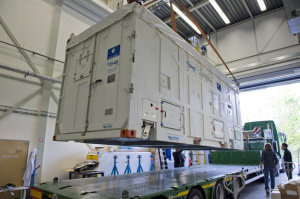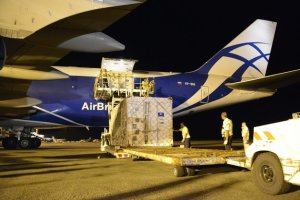The Independent Inquiry Board formed to analyze the causes of the anomaly occurring during the orbital injection of satellites in the Galileo constellation by a Soyuz rocket launched from the Guiana Space Center on August 22 announced its definitive conclusions on Tuesday, October 7, 2014 following a meeting at Arianespace headquarters in Evry, near Paris. Read more…
Tag Archives: sat-5
Galileo FOC satellites launch failure conclusions
On Aug. 22 the first two Galileo FOC satellites launched by Soyuz-STB Fregat-MT rocket were placed into the wrong orbit (https://galileognss.eu/galileo-foc-fm1-and-fm2-status-update/). European government officials said that the hydrazine fuel line was installed too close to a supercold helium line on the Fregat upper stage.
The installation caused the hydrazine to freeze long enough to upset the Fregat stage’s orientation and cause the two satellites’ release into an orbit that is both too low and in the wrong inclination, officials said. Read more…
Galileo-FOC FM1 and FM2 status update
Doresa and Milena, the fifth and sixth Galileo satellites, have been in a safe state since 28 August, fully under control from ESA’s centre in Darmstadt, Germany, despite having been released on 22 August into lower and elliptical orbits instead of the expected circular orbits.
The potential of exploiting the satellites to maximum advantage, despite their unplanned injection orbits and within the limited propulsion capabilities, is being investigated. Read more…
Galileo satellites ready for thursday launch
Final functional testing of Galileo satellites has been completed at Europe’s Spaceport in French Guiana.
The fuelling of the two satellites, allowing them to fine-tune their orbits and maintain their altitude over the course of their 12-year lifetimes, took place on 7–8 August. Read more…
Galileo launch 21-August and LEOP
The next pair of Galileo satellites are due to be launched together on a Soyuz rocket from French Guiana on 21 August, advancing the deployment of Europe’s own satellite navigation constellation.
Following launch, the most crucial point in the flight comes when the two satellites separate from their upper stage and the Launch and Early Operations (LEOP) phase begins, run from ESA’s Space Operations Centre (ESOC) in Darmstadt, Germany. Read more…
Galileo satellite departure to Europe’s Spaceport
The departure of the Galileo satellites from ESA’s test centre in the Netherlands took place on 5 May. Here is a picture of that moment. After several months of testing, this latest full-capability Galileo navigation satellite left along with its twin.
Both satellites were loaded aboard trucks to be driven to Frankfurt Airport in Germany. From there, they were flown to Europe’s Spaceport in French Guiana the following evening where they will be launched together by a Soyuz later this summer. Read more…
Next Galileo satellites arrive at Europe’s Spaceport
Europe’s two latest Galileo navigation satellites touched down on 7-May at Europe’s Spaceport in French Guiana, ready for their joint launch this summer.
Packed safely within protective and environmentally controlled containers, the satellites were carried across the Atlantic aboard a Boeing 747 cargo carrier. Read more…


